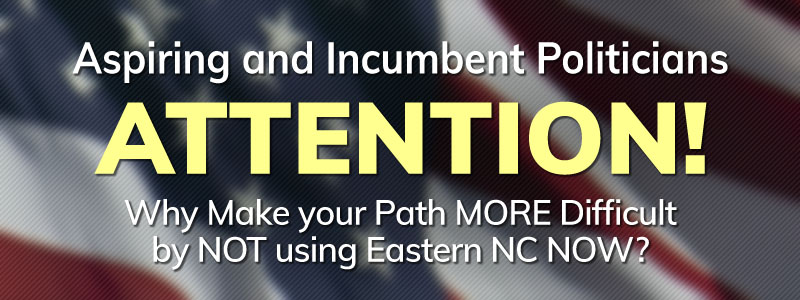Press Release:
As prepared for delivery by Kevin Hassett on April 23, 2018.
It is a pleasure to be here in New York today with you all to speak on the topic of situating Administration policy in a broader economic context, both in the U.S. and abroad. And it is an honor to be here in the presence of so many distinguished economists and policymakers.
Looking out at the crowd, I see many friends who I've known for years. And so I cannot help but be reminded of the first projects I worked on as an economist exploring the effects of policy changes on the economy. Being here takes me back to a time that was really only a few years ago-a few years, if you take the logarithm of the raw data, per the econometric conventions of the economics profession.
The econometric issue in question was a focus of mine in graduate school and as a faculty member at Columbia. It is the issue of how to generate causal estimates of the effect of policy changes. The intuition for this issue-one that as CEA (Council of Economic Advisors) Chair I can now confirm to be true-is that policy changes are not random. Policymakers formulate policy in response to current and expected economic conditions. Looking at correlations between policy variables and the trajectory of economic conditions would lead only to spurious estimates of how policy influences economic conditions. A correlation does not a causal estimate make. Moreover, the direction of the bias can tend to be non-random. Policies intended to reverse or mitigate bad economic conditions would appear to cause deteriorations in economic conditions. Think of it like this: Visits to the doctor would appear, based on a perusal of raw data on treatments and outcomes, to cause a downturn in one's health.
I can remember that my first regression in this space in graduate school revealed that investment tax credits cause steep reductions in investment. Puzzling through a wrong-signed result, it rapidly became clear that ITC's in the U.S. were almost always on during recessions. A large academic literature found that the user cost elasticity of investment was essentially zero. But policymakers tended to enact investment tax credits in response to current or expected downturns in economic conditions. Was the endogeneity of policy driving the result?
Indeed it was, as Alan Auerbach and I showed in one of my first publications. Alan Auerbach and I exploited the fact that the user cost of capital varies cross-sectionally when there is a tax reduction, but that this variation is surely inadvertent. Looking at the 1986 tax reform, Alan and I used this exogenous variation to generate a robust test of the predictions of the neoclassical model. We found the elasticity was not zero, but had the correct sign and might even be north of unity. The endogeneity of policy, unaccounted for in the previous literature, explained the apparent ineffectiveness of policy.
Only a few log(years) later, our inference that tax policy influences behavior seems to have stood the test of time. The capacity of economic research to identify the causal effects of variation in policy has also grown. The literature's arc towards larger rather than smaller estimates of the effects of policy variables is all around us, and in the top journals. Consider, for instance, the emergence of what is called "the narrative approach" to identifying the effects of tax policy on economic activity. These methodologies harness advances in computational power and natural language processing to identify the stated motivations of the policymakers that Alan and I worried about only a few log(years) ago. While no single paper can be dispositive, consider that the February 2018 online issue of the Quarterly Journal of Economics features an article that draws on this narrative approach to estimate an elasticity of personal income with respect to marginal tax rates. The paper's headline estimates were north of 1 (1.2 to be exact)-very high by contemporary standards as well as those of the literature a few log(years) ago.
But the identification of causal effects from econometric estimates can require assumptions about the structure and functional form of relationships between a specified set of policy variables and measures of economic activity. That is in addition to the requirement, of course, that you have the relevant data at hand in the first place-a requirement typically only satisfied in hindsight. But we value knowing now whether the policy is working as intended. The observation of the variation in forecasts before and after a policy is changed offers one way of looking at the policy's likely effects, just as Alan and I did in our first paper. And so, as we economists wait for evaluations of the effect of the Tax Cuts and Jobs Act on economic growth to percolate through the peer-review process and into academic journals, looking at changes in growth forecasts before and after the TCJA offers one way to gauge its expected effect on growth.
The evolution of recent forecast revisions is quite revealing, and consistent with the tax act having a large effect on growth expectations. If one looks, for example, at the Blue Chip consensus forecast for four-quarter real GDP growth in 2018 and 2019, it was roughly flat throughout most of 2017, as media coverage of the legislative prospects for the Administration's economic agenda was generally pessimistic. Consensus forecasts through November 2017 were therefore low-2.3 to 2.4 percent in 2018 and 2.1 percent in 2019.
Since November, however, we've seen steady upward revisions in private forecasts. As of this month, the Blue Chip consensus forecast is now for 2018 growth of 2.8 percent, and 2019 growth of 2.3 percent, upward revisions of 0.5 and 0.2 percentage point since the tax act was passed. Official forecasts revisions suggest an even bigger bump. In its last forecast before the tax bill was passed, the Congressional Budget Office projected growth of 2.0 and 1.5 percent in 2018 and 2019. That has now been revised up substantially-to 3.3 and 2.4 percent, respectively. In other words, the CBO now projects growth to be more than a percentage point higher, on average, over the next two years than they did a year ago. In addition, over the same timeframe, the CBO revised up its forecast of projected corporate income tax receipts over the 2018-2027 period by $476 billion. Which exceeds the CBO's own $409 billion static score of the TCJA. Ex ante, knowing only that the TCJA passed, based on my paper on corporate tax rates and the Laffer curve with Alex Brill, one could have predicted such a revenue increase.
Meanwhile, last summer, before the tax debate got seriously underway, the Federal Open Market Committee median forecast was for growth of just 2.1 and 1.9 percent in 2018 and 2019. That has since been revised up by 0.6 and 0.5 percentage point, respectively, with most of the upward revision occurring in December, as the tax bill made it over the legislative finish line.
Last week, the International Monetary Fund released its April 2018 World Economic Outlook (WEO). Global growth for 2018 was revised up 0.2 percentage point from its October WEO release to 3.9 percent year-over-year. The IMF attributes roughly half of the global growth revision to changes in U.S. fiscal policy. When honing in on the United States, the IMF's April 2018 update to its October 2017 World Economic Outlook revised up its growth forecast by 0.6 percentage point from October to 2.9 percent year-over-year. According to the IMF, one reason for this upward revision is the macroeconomic effects stemming from the Tax Cuts and Jobs Act passed in December.
The IMF's April upwards revision to its October global growth forecast in the wake of the passage of the TCJA follows the OECD's March upwards revision to its November global growth forecast. For the U.S., its 2018 outlook increased by 0.4 percentage point to 2.9 percent and its 2019 outlook increased by 0.7 percentage point to 2.8 percent. And the OECD's March Economic Outlook cited as one of the "key factors behind the upward revision to global growth prospects in 2018 and 2019" the "tax reductions . . . announced in the last three months."
I note in passing that these revisions are almost exactly what our analysis from last year implied they would be once the bill passes.
As for global growth, CEA's own in-house analysis finds that exogenous tax changes in the world's largest economy have large effects on global growth, suggesting the recent rise in growth expectations around the world is more the result of fiscal developments in the United States than the other way around. Applying the Romer & Romer exogenous tax shock series to a global structural vector autoregressive model indicates that a 1 percent cut in U.S. taxes as a fraction of GDP raises growth in the European Union by 0.8 percent in the year immediately following, with a peak impact of 1.2 percent after 2 years. We can reject the null hypothesis of no effect with 95 percent confidence. The estimated effect on the rest of the world is even bigger, with a peak impact after 2 years of 2.1 percent, and we can actually reject the null with 95 percent in both years 1 and 2.
While the mechanisms relating exogenous U.S. tax changes to global growth remain an open and, I believe, fascinating question for our ongoing work, the magnitude of the effect strongly suggests they extend far beyond the arithmetic relationship implied by the U.S. share of global GDP. Our own intuition is that other countries often learn from U.S. success, and adopt similar policies. Policy is endogenous, and successful policies are copied.
These forecasts are revised with an eye toward the literature that now rejects a user cost elasticity of zero. But don't just believe the forecasts. You can already see the effects emerging in the data. Real private nonresidential fixed investment increased 6.3 percent during the fourth quarter of 2017, according to data from the Bureau of Economic Analysis. Equipment investment rose 8.9 percent, thanks largely to the tax law's allowance for full expensing of equipment investment retroactively to September 2017. In March 2018, the Morgan Stanley Composite Capital Expenditure Plans Index reached its highest level since it began tracking in 2006. The three-month moving average is up 34 percent since November 2017, the last month before the bill became law. Goldman Sachs' capex tracker is similarly at a cycle high.
When the literature settles, I am sure that we will discover many patterns in the data that we did not expect. But if this investment boom continues as expected, I think you will all agree, it will mark an important and historic moment of success for economics as a science that guides policy.






















